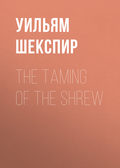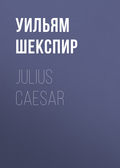![The Works of William Shakespeare [Cambridge Edition] [Vol. 1 of 9]](https://fictionbook.ru/pub/c/cover_330/25475391.jpg)
Уильям Шекспир
The Works of William Shakespeare [Cambridge Edition] [Vol. 1 of 9]
We have arranged the names both of Editors and of Commentators (as far as was possible) in order of time. It has frequently happened that several persons have hit on the same conjecture independently. In such cases we have assigned it to the earliest, determining the priority by the date of publication.
The metrical arrangement of each passage is marked in the notes by printing each word which commences a line with an initial capital letter. In the Folios, many substantives, other than proper names or titles, are printed with initial capitals; but, in order to avoid ambiguity, we have generally made our quotations conform, in this respect, to the modern usage.
We had originally intended to give in our Preface a catalogue raisonné of all the editions of our author and other books used by us in the preparation of the present work, but this labour has been fortunately spared us by Mr Bohn’s reissue of Lowndes’s Bibliographer’s Manual, the eighth part of which contains a full and accurate account of Shakespearian literature. To that work we refer our readers for more complete bibliographical details, and propose to confine ourselves to some remarks on the critical value of the principal editions and commentaries. We have, of course, confined our collation to those editions which seemed to possess an independent value of their own. Mr Bohn enumerates two hundred and sixty-two different editions of Shakespeare. It was therefore a matter of necessity to make a selection. In the following remarks we pass briefly in review the editions which we have habitually consulted.
Whenever any commentary was known to us to exist in a separate form, we have always, if possible, procured it. In some few instances, we have been obliged to take the references at second-hand.
The first Folio (F1), 1623, contains all the plays usually found in modern editions of Shakespeare, except Pericles. It was ‘published according to the True Originall Copies,’ and ‘set forth’ by his ‘friends’ and ‘fellows,’ John Heminge and Henry Condell, the author ‘not having the fate common with some to be exequutor to his own writings.’
In an address ‘To the great variety of Readers’ following the dedication to the Earls of Pembroke and Montgomery, the following passage occurs:
‘It had bene a thing, we confesse, worthie to have bene wished, that the Author himselfe had liv’d to have set forth, and overseen his owne writings; But since it hath bin ordain’d otherwise, and he by death departed from that right, we pray you do not envie his Friends, the office of their care, and paine, to have collected & publish’d them; and so to have publish’d them, as where (before) you were abus’d with diverse stolne and surreptitious copies, maimed, and deformed by the frauds and stealthes of injurious impostors, that expos’d them: even those are now offer’d to your view cur’d, and perfect of their limbes; and all the rest, absolute in their numbers, as he conceived them. Who, as he was a happie imitator of Nature, was a most gentle expresser of it. His mind and hand went together: And what he thought, he uttered with that easinesse, that wee have scarse received from him a blot in his papers.’
The natural inference to be drawn from this statement is, that all the separate editions of Shakespeare’s plays were ‘stolen,’ ‘surreptitious,’ and ‘imperfect,’ and that all those published in the Folio were printed from the author’s own manuscripts. But it can be proved to demonstration that several of the plays in the Folio were printed from earlier Quarto editions, and that in other cases the Quarto is more correctly printed or from a better MS. than the Folio text, and therefore of higher authority. For example, in Midsummer Night’s Dream, in Love’s Labour’s Lost, and in Richard the Second, the reading of the Quarto is almost always preferable to that of the Folio, and in Hamlet we have computed that the Folio, when it differs from the Quartos, differs for the worse in forty-seven places, while it differs for the better in twenty at most.
As the ‘setters forth’ are thus convicted of a ‘suggestio falsi’ in one point, it is not improbable that they may have been guilty of the like in another. Some of the plays may have been printed not from Shakespeare’s own manuscript, but from transcripts made from them for the use of the theatre. And this hypothesis will account for strange errors found in some of the plays – errors too gross to be accounted for by the negligence of a printer, especially if the original MS. was as unblotted as Heminge and Condell describe it to have been. Thus too we may explain the great difference in the state of the text as found in different plays. It is probable that this deception arose not from deliberate design on the part of Heminge and Condell, – whom as having been Shakespeare’s friends and fellows we like to think of as honourable men, – but partly at least from want of practice in composition, and from the wish rather to write a smart preface in praise of the book than to state the facts clearly and simply. Or the preface may have been written by some literary man in the employment of the publishers, and merely signed by the two players.
Be this as it may, their duties as editors were probably limited to correcting and arranging the manuscripts and sending them to the press. The ‘overseeing’ of which they speak, probably meant a revision of the MSS., not a correction of the press, for it does not appear that there were any proof sheets in those days sent either to author or editor. Indeed we consider it as certain that, after a MS. had been sent to press, it was seen only by the printers and one or more correctors of the press, regularly employed by the publishers for that purpose3.
The opinions of critics have varied very much as to the merits of the first Folio, some praising it as among the most correct, and others blaming it as one of the most incorrect editions of its time. The truth seems to be that it is of very varied excellence, differing from time to time according to the state of the MS. from which it was printed, the skill of the compositor, and the diligence of the corrector. There is the widest difference, for instance, between the text of the Two Gentlemen of Verona and that of All’s well that ends well.
As is the case with most books of that time4, different copies of the first Folio are found to vary here and there; generally, however, in a single letter only. It is probable that no one copy exactly corresponds with any other copy. We have indicated these variations, wherever they were known to us, in a note either at the foot of the page or at the end of each play.
A reprint of the first Folio, not free from inaccuracies, was published in 1807. A second reprint is now in course of publication by Mr Lionel Booth. The first part, containing the Comedies, has already appeared. It is probably the most correct reprint ever issued.
The second Folio (F2) is a reprint of the first, preserving the same pagination. It differs, however, from the first in many passages, sometimes widely, sometimes slightly, sometimes by accident, sometimes by design. The emendations are evidently conjectural, and though occasionally right, appear more frequently to be wrong. They deserve no more respect than those of other guessers, except such as is due to their author’s familiar acquaintance with the language and customs of Shakespeare’s day, and possible knowledge of the acted plays.
Capell’s copy of the second Folio has been of great use to us in our collations. He has annotated the margin with a multitude of marks in red ink, – conventional symbols indicating where and how it differs from the first. We have hardly in a single instance found his accuracy at fault.
The third Folio (F3) was first published in 1663, and reissued in the following year with a new title-page5, and with seven additional plays, viz.: Pericles, Prince of Tyre: The London Prodigal: The History of the Life and Death of Thomas Lord Cromwell: The History of Sir John Oldcastle, the good Lord Cobham: The Puritan Widow: A Yorkshire Tragedy: and The Tragedy of Locrine. With regard to the plays which it contains in common with the former Folios, it is on the whole a tolerably faithful reprint of the second, correcting, however, some obvious errors, making now and then an uncalled-for alteration, and occasionally modernizing the spelling of a word. The printer of course has committed some errors of his own.
The fourth Folio (F4) was printed from the third, but with a different pagination, in 1685. The spelling is very much modernized, but we have not been able to detect any other evidence of editorial care.
The first octavo edition was that of Nicholas Rowe, published in 1709, dedicated to the Duke of Somerset, in words which we take pleasure in recording: ‘’Tis the best security a poet can ask for to be sheltered under that great name which presides over one of the most famous Universities of Europe.’ It contained all the plays in the fourth Folio in the same order, except that the seven spurious plays were transferred from the beginning to the end. The poems were added also.
It is evident that Rowe took the fourth Folio as the text from which his edition was printed, and it is almost certain that he did not take the trouble to refer to, much less to collate, any of the previous Folios or Quartos. It seems, however, while the volume containing Romeo and Juliet was in the press he learned the existence of a Quarto edition, for he has printed the prologue given in the Quartos and omitted in the Folios, at the end of the play. He did not take the trouble to compare the text of the Quarto with that of F4. When any emendation introduced by him in the text coincides with the reading of F1, as sometimes happens, we are convinced that it is an accidental coincidence. Being, however, a man of natural ability and taste he improved the text by some happy guesses, while, from overhaste and negligence, he left it still deformed by many palpable errors. The best part of the work is that with which his experience of the stage as a dramatic poet had made him familiar. In many cases he first prefixed to the play a list of dramatis personæ, he supplied the defects of the Folios in the division and numbering of Acts and Scenes, and in the entrances and exits of characters. He also corrected and further modernized the spelling, the punctuation, and the grammar.
A characteristic specimen of blunders and corrections occurs in the Comedy of Errors, V. 1. 138.
important] F1 impoteant F2. impotent F3 F4. all-potent Rowe.
A second Edition, 9 Volumes 12mo, was published in 1714.
Pope’s edition in six volumes, 4to, was completed in 1715. On the title-page we read, ‘The Works of Shakespeare, in six volumes.’ The six volumes, however, included only the plays contained in the first and second Folios. The poems, with an Essay on the Rise and Progress of the Stage, and a Glossary, were contained in a seventh volume edited by Dr Sewell.
Pope, unlike his predecessor, had at least seen the first Folio and some of the Quartos of separate plays, and from the following passage of his preface it might have been inferred that he had diligently collated them all:
‘This is the state in which Shakespeare’s writings be at present; for since the above-mentioned folio edition [i. e. F4], all the rest have implicitly followed it without having recourse to any of the former, or ever making the comparison between them. It is impossible to repair the injuries already done him; too much time has elaps’d, and the materials are too few. In what I have done I have rather given a proof of my willingness and desire, than of my ability, to do him justice. I have discharg’d the dull duty of an editor, to my best judgment, with more labour than I expect thanks, with a religious abhorrence of all innovation, and without any indulgence to my private sense or conjecture. The method taken in this edition will show itself. The various readings are fairly put in the margin, so that every one may compare ’em, and those I prefer’d into the text are constantly ex fide codicum, upon authority.’







